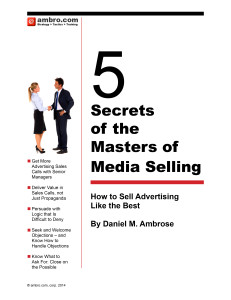The print magazine and newspaper industry is still struggling to adapt to the digital era. But print is not dying so much as adjusting to the post-print-bubble era. I first wrote about this in 2009 when the vicious downturn, touched off by the popping of the real estate bubble, accelerated the death of many print brands and the press was full of “the death of print” exclamations.
Understand the Past to Understand the Future
Most journalists, and even the rest of the advertising-supported print-publishing industry, doesn’t understand that we were in a print bubble in the media business right along with the growth of the real estate bubble. We believed, for some reason that the market needed dozens of home magazines, but that wasn’t all. We believed that the world needed hundreds of tech magazines and more than a dozen national parenting and baby care magazines. In many, if not most, hobbyist and business-to-business sectors there have been 3 or 4 or even 5 entries.
In cities, there once was one city magazine. Recently there have been as many as three upscale general-interest local magazines, possibly a local wedding magazine, and a local home and design magazine in every city…you get the idea.
Bubbles are characterized by over-optimistic thinking and are sometimes driven by government policy or by regulators who aid and abet by looking the other way. Often, bubbles are accompanied by, or encouraged by, borrowed money. In the case of the print bubble all four factors were in place.
For years, the postal service was required by the federal government to subsidize periodical postage rates. So the American magazine industry began to over-rely upon this subsidy sending magazines to readers with very low interest in the title in question.
Just as pressure to end the subsidy at the Post Office, causing postage costs go up to close the gap with the actual cost of delivery, the print-publishing auditing service was changing its rules to make it easier for a magazine subscription to qualify as certified good quality for advertisers. I’m referring to the Audit Bureau of Circulations (now called Association for Audited Media) that changed its rules incrementally through the 1990s and early 2000’s to allow circulation of doubtful quality to be certified by them as first-rate.
And because of the perceived permanent profitability of print publishing, especially in the newspaper business, but also the business to business and hobbyist magazine sector, great loads of debt were borrowed to buy and build more. Like the tulip-bulb mania in England and Holland in the 1600’s, the thinking was that the market could only go up!
These print-bubble-trends were in place in 2001 when the bursting of the dot-com bubble drove down technology advertising. Suddenly the reduced spending by Internet startups and the the interest of technology marketers in moving money to spend online began to poke holes in the magazine bubble. Some – okay many – tech magazines folded. The tech titles Red Herring and The Industry Standard went from publishing 300+ page issues to out-of-business. But journalists covering the media didn’t say; “‘ya’ll, there was a tech magazine bubble, now it’s bursting.” They said it presaged the death of print. This death-of-print mantra has been repeated as home magazines and parenting magazines have closed and newsweeklys, women’s magazines, and especially newspapers have been hard-hit.
The death-of-print-drum beat has been louder than ever from the hand-wringing journalists losing their jobs to the death of the “number-two” newspapers in markets like Denver and Seattle, newspapers that would have died many years ago were it not for the creation of an artificial life support of the anti-trust exemption that allowed joint operating agreements for two competing local newspapers to collude and share services.
All of this is a necessary preamble to a simple message to you, my colleagues. Maybe print will die; it’s more likely print will be restructured. Where there were two there will be one. Where there were three titles there will be two. Even if you believe the end of the trend is zero in every category, in the short run you are all competing for your survival. The habits and practices that worked on the way up will not work in the Darwinian competition to be ‘the one’ or one of the ‘the two.’
Yes, this is a commercial for my services. Or this is a promo for the services of one of the handful of other sales consultants who can help you achieve and maintain a competitive advantage in salesmanship.
Salesmanship at the New York Times drove the longer established and previously more prestigous Herald Tribune out of business in part because of the marketing and sales savvy of Monroe Green. Xerox, Merck and IBM are supreme companies that have been built upon – among other things – a serious commitment to sales-man-ship and to sales training. Ziff-Davis, back in the day, achieved its stunning success – first in special interest magazines, then in computer magazines — with a structured sales training approach that was designed in a way similar to the Xerox structured approach. Pharmaceutical, computer and financial companies train their sales people for months before they go on their first call. But for some reason, many in the media business think it is ok to hire an articulate and motivated person, give them a rate card, and send them on a call to sell an important business-to-business service that is often the single largest discretionary (at least they think it is discretionary) spending decision made by a business.
So let’s be clear. It was a print-bubble out there. But you can help your company survive – and prosper when there it less competition — with superior salesmanship.

